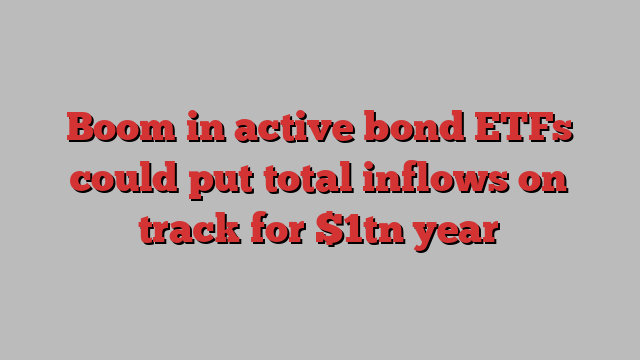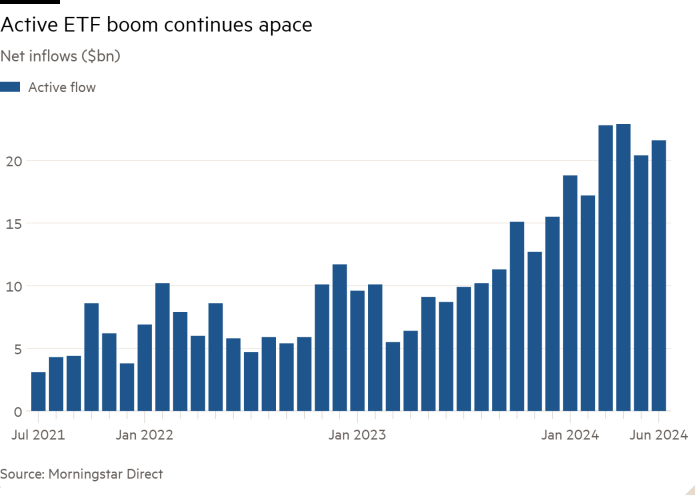
Stay informed with free updates
Simply sign up to the Exchange traded funds myFT Digest — delivered directly to your inbox.
Investors are shovelling cash into exchange traded funds that invest in a handpicked array of bonds, with record inflows since January that are pushing the industry towards its first $1tn annual haul.
Actively managed fixed-income ETFs took in $7bn in June and have garnered $41bn over the first half of 2024, surpassing 2023’s record of $33bn for the entire year, according to data from State Street Global Advisors, the third-largest US ETF issuer.
Most investors think of passive equity strategies such as index trackers when they think of ETFs — such as those made popular by SSGA, Vanguard and BlackRock, which comprise the bulk of the market — but active ETFs and bond ETFs in particular have been capturing a growing share of new money from investors in the $9tn US ETF industry.
“I don’t see this momentum slowing,” said Matt Bartolini, head of SPDR Americas research with SSGA. “In fact, I see it building” as they develop longer track records that draw investor interest, he added.

They have been aided by retail interest, particularly among younger investors, and a 2019 rule change by the Securities and Exchange Commission that streamlined the process for launching new ETFs and paved the way for active ETFs. ETF managers also benefit from actively managed offerings because they are about three times more expensive on average than their passive counterparts, according to the Investment Company Institute.
As actively managed ETFs have enjoyed record flows this year and amount for the bulk of new fund launches, actively managed mutual funds continue to leak billions of dollars month after month. They also tend to carry lower fees, averaging about 11 basis points fewer than their mutual fund peers, according to ICI.
Longtime ETF industry observer Dave Nadig noted that it has been nearly four years since an all-time high in the most widely used US bond index, the Bloomberg US Aggregate Bond index, or simply, “the Agg.”
“That’s a long time for an index to be so boring, so obviously investors are going to look for any chance to beat that,” Nadig said.
Overall, US ETFs raked in more than $80bn in June, for a total of $411bn through the first six months of the year, per SSGA. The calendar-year record is just over $911bn in 2021.
ETF flows are usually higher in the second half of the year, due in part to end-of-year shuffling to maximise tax benefits. Bartolini said it was possible that the US ETF industry could enjoy its first $1tn flow year, adding that the chances of hitting $1tn would improve if the Federal Reserve were to cut rates and fuel a late-year “Santa Claus Rally”.
“It would need to be a massive December,” Bartolini said.